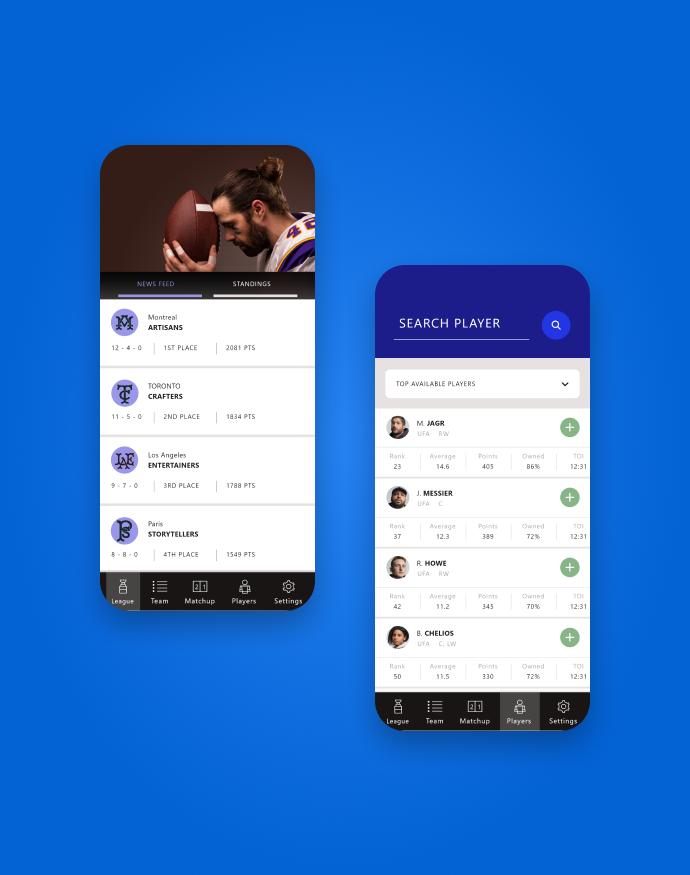- What is an Educational Game?
- Educational Game Market Insights
- How Do Educational Games Work?
- Educational Games: Types
- Must-Have Features in Educational Game Applications
- How to Develop an Educational Game App: Step-by-Step Guide
- Technology Stack Required For the App
- Mechanics for Educational Games
- Tips to Keep in Mind to Make Educational Games More Engaging
- How Do Educational Games Generate Money?
- Factors Influencing the Cost of Developing an Educational Game
- Conclusion-
- FAQs

Step into a world where learning becomes an adventure! Immerse yourself in the captivating realm where educational games have undergone a remarkable transformation. Gone are the days of mundane textbooks and boring lectures. Today, games have evolved into powerful tools that ignite curiosity, foster critical thinking, and unlock the boundless potential of young minds.
In this captivating article, we invite you to embark on a journey where learning takes center stage in exhilarating quests. Join us as we dive into the stages of educational game development, uncovering insights and strategies to create engaging experiences. We’ll explore the creative process, the fusion of education and gaming elements, and the costs involved in bringing these immersive experiences to life. Get ready to unlock the secrets of educational game development!
- What is an Educational Game?
- Educational Game Market Insights
- How Do Educational Games Work?
- Educational Games: Types
- Must-Have Features in Educational Game Applications
- How to Develop an Educational Game App: Step-by-Step Guide
- Technology Stack Required For the App
- Mechanics for Educational Games
- Tips to Keep in Mind to Make Educational Games More Engaging
- How Do Educational Games Generate Money?
- Factors Influencing the Cost of Developing an Educational Game
- Conclusion-
- FAQs
What is an Educational Game?
An educational game is a special type of software application that’s all about learning while having fun! It’s designed to be used on digital devices like smartphones, tablets, or computers, and it’s aimed at children or students who want to enhance their knowledge and skills in various subjects. These games are like little virtual classrooms but with a twist—they incorporate game elements and mechanics to make the learning experience interactive and immersive.
The cool thing about educational games is that they cover a wide range of topics and subjects. Whether you want to learn math, science, history, or even a foreign language, there’s probably an educational game out there for you. These games often include features like quizzes, puzzles, simulations, interactive storytelling, and challenges. These activities are carefully designed to help you remember what you’ve learned, develop critical thinking and problem-solving skills, and understand the subjects better.
One of the main goals of educational games is to make learning enjoyable. They do this by incorporating game mechanics that engage and motivate you to keep playing and learning. Instead of feeling like a chore, education becomes exciting and something you actually look forward to. Plus, these games often have features that track your progress, adapt to your learning style, and give you personalized feedback. That way, you can see how far you’ve come and focus on areas where you need a little more practice.
Educational Game Market Insights
(Credits: VerifiedMarketResearch)
Did you know, children’s screen time can range from 5 to 7 hours per day?
Around 25% of children receive their first phone by the age of 10.7.
Online gaming has witnessed a significant surge in popularity among children, particularly during the COVID-19 pandemic.
A 2022 survey revealed that 82% of children aged 12 to 15 in the UK reported playing online games like Fortnite or Minecraft.
Gaming emerged as the top interest for boys aged 8-15, surpassing other forms of entertainment, and ranked as the second highest interest for girls aged 8-11.
Before the pandemic, educational apps showed great potential, with education and games being the top two categories on the Google Play Store.
On the Apple App Store, games were the most popular category, with educational apps ranking third.
The popularity of educational apps before the pandemic suggests a strong market potential, and the shift towards remote learning during the pandemic likely increased the demand for educational apps.
.Did you know? The global educational games market was valued at USD 11.24 Billion in 2021.
The market is driven by the increasing demand for user engagement in enterprises and the development of mobile-based educational games.
Progress in learning outcomes and the adoption of virtual reality in training and development activities also contribute to market growth.
The usage of smartphones, demand for cost-effective training modules, and strong growth in research and planning are driving factors.
Large-scale digitization and the emergence of social networks present new opportunities in the market.
Inappropriate game design and a lack of proficiency in serious games act as restraints to market growth.
How Do Educational Games Work?
Educational games are super cool because they blend the best of education and gaming to make learning fun and effective. Let’s break down how these games typically work:
1. Setting Learning Objectives
First things first, educational games have specific goals in mind. They establish learning objectives, which are basically the things you’re supposed to learn while playing the game. Whether it’s mastering math concepts or exploring historical events, the game knows what it wants to teach you.
2. Game Design and Mechanics
Once the objectives are set, the game designers get to work. They create an awesome game with engaging mechanics and a cool design. They decide on things like the game genre, how it’s played, what it looks like, and how it sounds. They want you to have a blast while learning!
3. Content Integration
Now comes the fun part—integrating educational content into the game. The game designers weave quizzes, puzzles, challenges, simulations, and interactive storytelling into the gameplay. All these cool activities directly relate to the learning objectives. So while you’re having a great time playing, you’re also absorbing knowledge.
4. Player Engagement
Educational games want you to be an active participant in your own learning. They give you opportunities to explore, solve problems, think critically, and make decisions within the game’s world. And to keep you hooked, they offer rewards, achievements, and ways to track your progress. That way, you’re motivated to keep going and keep learning.
5. Feedback and Assessment
Nobody likes feeling stuck, right? That’s why educational games provide real-time feedback. They let you know how you’re doing, whether your answers are right or wrong, and guide you on the right track. They might show your progress, offer recommendations, or point out areas where you can improve. It’s like having a virtual teacher cheering you on!
6. Adaptivity and Progression
Some educational games are extra smart—they adapt to your level. If you’re finding it too easy or too challenging, they adjust the difficulty or content accordingly. This personalized approach ensures that you’re always learning at the right pace and tackling the right challenges. It’s like having a game that’s tailor-made just for you.
7. Assessment and Monitoring
Educational games love to keep tabs on your progress. They track your scores, completion rates, time taken to solve challenges, and mastery of specific skills. All this data helps them understand how you’re doing and identify areas where you’re excelling or could use a little extra help. It’s like having a personal progress report!
8. Parental Involvement
Parents play a big role in children’s education, and educational games recognize that. They often provide features that let parents monitor their child’s progress, set goals, customize content, and receive reports or recommendations. It’s a great way for parents to stay involved and support their child’s learning journey.
9. Continuous Improvement
Educational games are constantly evolving. They listen to user feedback, analyze data, and stay up to date with the latest educational research. This ensures that the games remain effective, engaging, and relevant. It’s like having a game that keeps getting better and better!
By blending engaging gameplay, interactive content, adaptivity, and ongoing assessment, educational games create an exciting learning environment. They want you to actively participate, remember what you’ve learned, and develop new skills. So go ahead, dive into the world of educational games, and embark on an adventure of learning and fun!
Educational Games: Types
When it comes to educational games for kids, there’s a whole world of options to choose from. Let’s take a look at some of the different types of educational games that cater to their learning needs:
1. Board Games Adapted to Digital Platforms
Remember classic board games like chess, Scrabble, or Monopoly? Well, now you can enjoy them in their digital form! These interactive versions offer the same fun gameplay experience while adding an educational twist.
2. Games that Teach Specific School Subjects
If you want to focus on a particular subject like math, chemistry, biology, language arts, history, or geography, there are educational games designed just for that! These games present the content in a way that’s interactive and engaging, making learning enjoyable.
3. Games that Teach Life Skills
Education isn’t just about academic subjects. It’s also about acquiring practical life skills. Educational games in this category help kids learn skills like financial literacy, time management, problem-solving, decision-making, critical thinking, and social skills. They prepare kids for real-life situations.
4. Games to Train Strategic Thinking and Problem-Solving
Strategy games are fantastic for developing critical thinking and problem-solving skills. They challenge players to think strategically, make decisions, and solve complex problems. These games are like mental workouts that sharpen your brain.
5. Social Games that Enhance Communication Skills
Communication and collaboration are crucial skills in today’s world. Educational games in this category focus on improving communication skills through teamwork, role-playing, and interactive storytelling. They teach kids effective communication, empathy, and understanding.
6. Games for Educating Kids with Special Needs
Inclusivity is essential, and educational games cater to children with special needs too. These games provide a supportive and inclusive learning environment, targeting areas like sensory integration, cognitive skills, motor skills, and social interaction. Everyone deserves a chance to learn and grow!
7. Multi-Subject Tutoring Games
For a comprehensive learning experience, there are educational games that cover multiple subjects. These games act as virtual tutors, combining subjects from various fields like languages, arts, sciences, and more. They ensure a well-rounded educational journey.
By offering such a diverse range of educational games, developers can meet the unique learning needs of both kids who play the games and parents who supervise their gameplay. It’s all about creating a fun and enriching educational experience for children of all backgrounds and abilities. So go ahead, explore the world of educational games, and embark on an exciting learning adventure!
Must-Have Features in Educational Game Applications
When it comes to educational game applications, there are some must-have features that make them effective and engaging. Check out these essential features:
1. Learning Objectives
Clearly defined educational goals and outcomes that align with the knowledge or skills being taught.
2. Interactive Content
Engaging and interactive content that presents educational concepts in a stimulating and enjoyable way.
3. Progress Tracking
A system that tracks and monitors the player’s progress, providing feedback and highlighting areas for improvement.
4. Personalization
The ability to adapt the game’s difficulty level or content based on the player’s skill level, creating a personalized learning experience.
5. Feedback Mechanisms
Immediate and constructive feedback that guides the player’s learning journey and helps them understand their strengths and weaknesses.
6. Gamification Elements
Incorporation of game-like elements such as rewards, achievements, leaderboards, or badges to motivate and incentivize players.
7. Quizzes and Assessments
Embedded assessments or quizzes that evaluate the player’s knowledge or skills and provide a measure of their progress.
8. Adaptivity and Differentiation
Adaptive features that adjust the game’s challenges or content based on the player’s performance, ensuring tailored learning experiences.
9. Multimodal Learning
Integration of various multimedia elements like visuals, audio, and interactive components to cater to different learning styles and enhance engagement.
10. Replayability and Replay Value
The game should offer replayability, allowing players to revisit completed levels or activities to reinforce learning or improve their performance.
11. Clear Instructions and Tutorials
Clear and concise instructions or tutorials that guide players on how to navigate the game and interact with educational content.
12. Parental Involvement and Controls
Features that allow parents or guardians to monitor their child’s progress, set goals, customize the content, and apply appropriate controls or restrictions.
13. Accessibility Options
Consideration for accessibility features such as adjustable text size, color contrast, subtitles, or support for alternative input methods to ensure inclusivity.
14. Real-World Application
Opportunities for players to apply learned concepts or skills to real-world contexts, promoting practical application and transfer of knowledge.
15. Comprehensive Reporting
Detailed reports or analytics that provide insights into player performance, progress, and areas of strength or weakness for assessment and intervention.
16. Social Media Integration
Integration with social media platforms to enable users to share achievements and progress or engage with other players.
17. Personalized Experience
Customizable learning paths or adaptive features that tailor the game experience to the individual player’s needs and preferences.
18. Video-based Content
Integration of video-based content, such as lectures or instructional videos, to enhance learning and engagement.
19. Interactive Mechanics
Incorporation of interactive mechanics like puzzles or creating/building activities that promote problem-solving and critical thinking.
20. Excellent UX/UI
A user-friendly interface, attractive design, and easy navigation to enhance the overall user experience and make the game enjoyable to play.
By including these features, educational game applications can deliver effective and engaging learning experiences that optimize outcomes for players. So go ahead and create an educational game that’s fun, interactive, and beneficial for learners of all ages!
How to Develop an Educational Game App: Step-by-Step Guide
Developing an educational game app can be a rewarding and impactful project. In this section, we have given the step-by-step process to help you bring your vision for the educational game application to life and create an engaging learning experience for users.
1. Define Learning Goals and Curriculum Alignment:
- Understanding the target audience’s age group, educational needs, and preferences is crucial for developing an educational game that effectively engages and educates users.
- Conducting user research and analysis helps inform game design by tailoring the educational experience, identifying specific needs, understanding preferences, and enabling iterative improvements.
- By involving the target audience in the development process, developers create a user-centric approach and increase the game’s impact and success.
2. Select App Development Platform and Technology:
- Choose the appropriate platform(s) for your target audience (e.g., iOS, Android) and select the development framework or tools accordingly.
- Consider the technical requirements, scalability, and compatibility of the chosen platform.
3. Design User Interface and User Experience (UI/UX):
- Create intuitive and visually appealing interfaces that are engaging and easy to navigate for the target age group.
- Focus on providing a seamless user experience with clear instructions, interactive elements, and feedback mechanisms.
4. Develop Game Mechanics and Features:
- Implement game mechanics that align with the learning goals, such as quizzes, puzzles, simulations, or interactive challenges.
- Incorporate features like progress tracking, achievements, leaderboards, or social interactions to enhance engagement.
5. Integrate Multimedia Content:
- Include multimedia elements like images, videos, audio, and animations to support the educational content and enhance user engagement.
- Ensure that multimedia files are optimized for performance and compatible with the chosen platform(s).
6. Implement Assessment and Progress Tracking:
- Integrate assessment features to evaluate users’ knowledge or skills, such as quizzes, tests, or interactive exercises.
- Develop a system to track and record user progress, allowing users and educators to monitor their achievements and identify areas for improvement.
7. Enable Personalization and Adaptive Learning:
- Incorporate adaptive learning mechanisms that adjust the difficulty level or content based on the user’s performance or learning needs.
- Provide options for customization, allowing users to personalize their learning experience.
8. Implement Gamification Elements:
- Integrate gamification elements like rewards, badges, points, or virtual currencies to motivate and engage users.
- Design a progression system that encourages continuous learning and provides incentives for achieving milestones.
9. Integrate Backend Services:
- Set up a backend server or utilize cloud services to manage user profiles, data synchronization, progress tracking, and analytics.
- Implement secure user authentication and data storage to protect user information.
10. Optimize Performance and Load Times:
- Optimize the app’s performance, ensuring smooth gameplay, fast loading times, and minimal lag.
- Conduct thorough testing and optimization to ensure compatibility across different devices and screen sizes.
11. Implement Monetization Strategies:
- Choose the appropriate monetization model for your app, such as in-app purchases, ads, subscriptions, or a freemium model.
- Integrate the necessary mechanisms for monetization while maintaining a balance between revenue generation and user experience.
12. Effective Marketing and Distribution Strategies
When it comes to promoting and distributing educational games, effective marketing strategies are crucial to reach the target audience and ensure widespread adoption. Here’s an elaboration on various tactics that can be employed:
- App Store Optimization (ASO): Optimize your game’s visibility and discoverability on app stores by utilizing ASO techniques. This includes optimizing keywords, writing compelling descriptions, creating eye-catching screenshots and videos, and encouraging positive user reviews. A well-optimized app store listing can significantly increase the game’s visibility and attract organic downloads.
- Content Marketing: Develop engaging and informative content related to your educational game. Create blog posts, articles, or videos that discuss educational topics, highlight the benefits of game-based learning, or provide tips and strategies for using educational games effectively. Share this content on your website, social media platforms, and relevant educational communities to establish thought leadership and generate interest in your game.
- Influencer Partnerships: Collaborate with influential figures in the education or gaming industry who have a dedicated following. Reach out to educational influencers, teachers, bloggers, or YouTube content creators who align with your game’s target audience. Arrange partnerships where they can review, showcase, or endorse your game to their audience. This can greatly expand your reach and credibility within the educational community.
- Educational Communities and Organizations: Engage with educational communities, forums, and organizations to promote your game. Participate in relevant discussions, share your expertise, and introduce your game as a valuable educational resource. Connect with teachers, schools, educational conferences, and events to demonstrate the educational benefits of your game and explore partnership opportunities.
- Social Media Marketing: Leverage social media platforms to engage with your target audience, share updates, and build a community around your game. Create compelling and visually appealing content that showcases the gameplay, educational features, and benefits of your game. Encourage user-generated content by organizing contests, challenges, or sharing success stories. Engage with users, respond to comments, and foster a sense of community and excitement around your game.
- User Reviews and Testimonials: Encourage users to provide reviews and testimonials for your educational game. Positive reviews and testimonials can significantly influence potential users’ perception of the game’s quality and educational value. Display these reviews prominently on your website, app store listings, and marketing materials to build trust and credibility.
- Targeted Advertising: Consider targeted advertising campaigns to reach your specific target audience. Utilize platforms like Google Ads, social media advertising, or educational websites to target users who are interested in educational games or relevant educational topics. Tailor your ads to highlight the educational benefits, gameplay features, and unique selling points of your game.
- Free Trials and Freemium Models: Offer free trials or freemium models to allow users to experience a portion of your game before making a purchase. This allows users to evaluate the educational value and gameplay experience, increasing the likelihood of conversion to paying customers. Implement in-app purchases or subscriptions to unlock additional content or advanced features.
13. Test, Debug, and Quality Assurance:
- Conduct comprehensive testing to identify and fix any bugs, errors, or usability issues.
- Perform compatibility testing across various devices, screen resolutions, and operating systems.
- Ensure compliance with relevant app store guidelines and regulations.
14. Launch and Distribution:
- Prepare promotional materials and app store assets, such as screenshots, descriptions, and promotional videos.
- Submit the app to relevant app stores (e.g., Apple App Store, Google Play Store) and follow their submission guidelines.
- Develop a marketing strategy to generate awareness and drive app downloads, including social media campaigns, influencer collaborations, and targeted advertising.
15. Collect User Feedback and Iterate:
- Encourage user feedback through ratings, reviews, surveys, or in-app feedback mechanisms.
- Analyze user feedback and data analytics to identify areas for improvement and prioritize updates or new features.
16. Provide Ongoing Maintenance and Support:
- Continuously monitor app performance, address user-reported issues promptly, and release updates to enhance functionality and address any compatibility issues.
- Stay updated with platform updates, security patches, and new technologies to ensure app compatibility and security.
By following these detailed app-specific steps, you can develop an educational game app that delivers a seamless user experience, facilitates learning, and engages users in an interactive and enjoyable manner.
Technology Stack Required For the App
Here’s a table outlining the essential components of a tech stack for developing an educational game app. This tech stack provides a comprehensive set of tools and frameworks that can be used for developing an educational game app, covering various aspects such as game engine, programming languages, graphics, audio, UI, database, cloud services, analytics, monetization, and cross-platform development.
| Technology | Purpose | Tools/Frameworks |
| Game Engine | Provides the core framework for game development | Unity, Unreal Engine, Cocos2d-x |
| Programming Languages | Used for coding game logic and functionality | C#, C++, JavaScript, Python |
| Graphics and Animation Libraries | Enables visual elements and animations in the game | OpenGL, WebGL, Unity Animation System |
| Audio Libraries | Handles sound effects and background music | FMOD, Wwise, OpenAL |
| User Interface (UI) Framework | Facilitates the creation of user interfaces | Unity UI, Unreal Motion Graphics (UMG), Qt |
| Database | Stores game data and user progress | Firebase, MySQL, PostgreSQL, SQLite |
| Cloud Services | Allows for scalable storage and backend services | Amazon Web Services (AWS), Google Cloud Platform (GCP), Microsoft Azure |
| Analytics | Tracks user behavior and game performance | Google Analytics, Firebase Analytics, Flurry Analytics |
| Monetization SDKs | Integrates ad networks or in-app purchase systems | Google AdMob, Unity Ads, Apple App Store In-App Purchases |
| Cross-Platform Development Tools | Enables development for multiple platforms | Xamarin, React Native, Flutter, Unity Multiplatform Support |
Mechanics for Educational Games
The game mechanics listed below can be combined or adapted to create engaging and effective educational game experiences for children.
| Game Mechanics | Description |
| Quizzes | Incorporate quizzes into character journeys for RPG or adventure games. |
| Puzzles | Use puzzles as core mechanics or alongside other elements in learning games. |
| Merging | Merge objects to teach basic science facts and the concept of mixing elements. |
| Creating | Build structures or empires by completing learning sessions, fostering strategic thinking. |
| Connecting | Connect points efficiently while avoiding obstacles, promoting analytical skills. |
| Timers | Use timers to add a sense of urgency and challenge to educational games. |
| Simulation | Simulate real-life scenarios to provide a hands-on learning experience. |
| Word Games | Incorporate crossword puzzles or word searches to improve language skills. |
| Memory Games | Challenge players to remember and match pairs of objects, improving memory and concentration. |
| Decision-Making | Present choices for players to make decisions that impact the game’s outcome, fostering critical thinking. |
| Time Management | Require players to manage resources and prioritize tasks, teaching organizational skills. |
| Exploration | Encourage players to explore virtual environments and uncover hidden information. |
| Pattern Recognition | Challenge players to identify and analyze patterns, enhancing logical reasoning. |
| Collaboration | Promote teamwork and cooperation among players to solve problems together. |
| Customization | Allow players to personalize characters, environments, or game elements, fostering creativity. |
Tips to Keep in Mind to Make Educational Games More Engaging
When developing an educational game app, consider the following points to make it engaging and effective for learning:
1. Enhancing Learning with Engaging Game Settings and Plots
Setting and plot play a crucial role in educational games, distinguishing them from educational apps. These games go beyond quizzes and puzzles, requiring captivating narratives, well-developed characters, and compelling settings to create an immersive and entertaining learning experience.
By linking visuals to new knowledge, educational games can enhance retention and understanding, making it beneficial to build the game’s plot around the subject being taught. For example, literature can be taught through adventures with historical figures or folklore characters, engaging kids with interactive storytelling.
2. Make Learning Fun by Adding Entertainment to Educational Games
The primary objective of educational games is to make learning enjoyable for children. Incorporating entertainment into game design is essential to engage and motivate young learners.
This can be achieved through a variety of strategies, including mixing and varying educational elements and mechanics, building an enticing plot that creates curiosity and anticipation, and investing in visually appealing art, animations, and sound effects. By infusing fun into the learning experience, educational games can capture children’s interest and encourage active participation.
3. Strike a Balance b/w Creativity and Accuracy
Educational game developers must ensure that the content aligns with proven facts and provides trustworthy information to support effective learning outcomes. By maintaining accuracy in educational game design, developers can foster a solid foundation of knowledge in an engaging and interactive manner.
4. Aligning with School Syllabi for Educational Relevance
Developing educational games that align with school syllabi offers a valuable opportunity to reinforce classroom learning. By taking reference from school curricula, game developers can determine the order of topics and select relevant content to create an educational game that complements and supports the learning objectives of students.
This alignment helps students to connect their gameplay experiences with their school lessons, making studying more enjoyable and facilitating better retention of the material.
5. Investing in Quality Art and Sound
In educational game development, paying attention to high-quality art, animations, sound effects, and vibrations is vital to creating an immersive and engaging experience.
Children rely heavily on sensory experiences, so visually appealing graphics, theme-appropriate audio, and engaging vibrations can enhance their overall gameplay experience. Tailoring the game’s visuals and audio to different age groups and leveraging sensory elements effectively contribute to the game’s educational impact.
6. Incorporating Expression and Creativity in Game Design
Promoting creativity and self-expression within educational games can enhance the learning experience for children. By incorporating puzzles, quizzes, and activities that allow children to use their imagination and think creatively, game developers can foster critical thinking skills and deeper engagement with the educational content.
Offering opportunities for children to solve problems, make choices, and explore new knowledge through associations can empower them to become active participants in their own learning journey.
7. Go For Hyper-Casual Games for Engaged Learning
Hyper-casual games, characterized by short and diverse gameplay sessions, are well-suited for educational games targeting children. These games cater to the shorter attention spans of younger players and help maintain their engagement by offering quick, varied tasks. By providing short and focused gameplay sessions, educational games can captivate children’s attention, encourage active learning, and promote extended periods of play and knowledge acquisition.
How Do Educational Games Generate Money?
Educational games employ various revenue-generating tactics, such as in-app advertising, subscriptions, rewarded ads, and partnerships, to monetize their offerings while maintaining a valuable and engaging learning experience. Let’s take a closer look at them:
1. In-App Advertising
You can generate revenue by incorporating ads within the game. However, it’s crucial to ensure that the ads do not disrupt the learning experience and are age-appropriate for young players.
2. Rewarded Ads
Implement rewarded ads that offer users incentives, such as virtual currency or extra lives, in exchange for watching an ad. This encourages engagement and provides an alternative to in-app purchases.
3. In-App Purchases
Offer additional content, features, or virtual goods for purchase within the game. It’s important to implement mechanisms that prevent unauthorized purchases by children and ensure transparency.
4. Paid Downloads
Set a price for the game and sell it as a paid download. This strategy works best if your game has a strong reputation or if you partner with an established educational game publisher.
5. Subscription Model
Provide access to the full game or premium content through a subscription-based model. Offer a trial period to attract users and provide ongoing value to subscribers.
6. Partnership with Influencers
Collaborate with popular educational influencers or content creators to promote the game through sponsored content or endorsements. This can increase visibility and attract more users to your game.
7. Licensing and Merchandising
Explore opportunities to license the game’s characters, brand, or content for merchandise such as toys, clothing, or books. This can create additional revenue streams beyond the game itself.
8. Government or Institutional Funding
Seek funding from government initiatives, educational institutions, or grants dedicated to educational games. This can provide financial support and stability for the development and maintenance of your game.
9. Sponsorships and Partnerships
Collaborate with relevant brands or organizations that align with the educational content of your game. Secure sponsorships or partnerships that provide financial support or cross-promotion opportunities.
10. Crowdfunding
Engage with the community and potential players by launching a crowdfunding campaign. Offer exclusive rewards or early access to backers to incentivize contributions.
Consider these revenue strategies and choose the ones that align best with your game and target audience. Remember to strike a balance between monetization and maintaining a valuable and engaging learning experience.
Factors Influencing the Cost of Developing an Educational Game
The cost of developing an educational game app depends on several factors that impact the overall development process. Factors such as platform selection, complexity of educational content, artwork and sound assets, game engine, and backend integration influence the cost of creating an engaging and educational gaming experience. All of them are listed below in detail:
1. Platform Selection
- Android: Generally more cost-effective due to a wide range of devices, but requires compatibility testing.
- iOS: 10-20% more expensive due to payment system implementation, admin panel, and App Store restrictions.
- Cross-platform: Recommended for wider revenue and reach, but development costs increase.
2. Complexity of Educational Content
- The depth and complexity of the educational content within the game will affect the development costs.
- More extensive and intricate educational content requires additional research, planning, and implementation.
3. Artwork and Sound Assets
- Creating custom artwork and sound assets specific to the educational game adds to the development costs.
- Hiring in-house artists or outsourcing artwork can impact the budget.
4. Game Engine and Tools
- Selecting the appropriate game engine (e.g., Unity, Unreal Engine) and other development tools impacts costs.
- Licensing fees, if applicable, should be considered.
5. Back End and Database Integration
- If the educational game requires storing user progress, achievements, or syncing across devices, a back end and database integration will be needed, adding to the development costs.
6. User Interface and User Experience Design
- Creating an intuitive and engaging user interface (UI) and user experience (UX) tailored to the educational game increases development costs.
- Designing interactive elements, animations, and seamless navigation contribute to the overall budget.
7. Game Mechanics and Interactivity
- The complexity and variety of game mechanics, including quizzes, puzzles, simulations, and interactive elements, affect development costs.
- Designing and implementing engaging gameplay features require additional time and resources.
8. Testing and Quality Assurance
- Ensuring a bug-free and smooth user experience through thorough testing and quality assurance processes adds to the development costs.
- Testing across different devices and platforms may require additional resources.
9. Localization and Internationalization
- If the educational game targets a global audience, localization and internationalization efforts should be considered.
- Translating content, adapting cultural references, and ensuring compatibility with different languages and regions can increase development costs.
10. Iterative Development and Updates
- Educational games often benefit from iterative development and regular updates to improve content, address user feedback, and add new features.
- Allocating resources for ongoing maintenance, updates, and potential expansion is essential.
These factors may vary based on the specific requirements, scope, and target audience of your educational game app.
Conclusion-
In conclusion, creating an educational game app requires careful consideration of various factors. By selecting the right platform, determining the type and complexity of the game, ensuring high-quality artwork and sound assets, choosing a suitable game engine, integrating a backend system if necessary, and implementing effective marketing strategies, developers can successfully create an engaging and educational gaming experience.
If you are seeking to develop an educational game app, Idea Usher is the ideal partner for your project. With our expertise in game development, we understand the unique requirements of creating an engaging and educational gaming experience. By carefully considering factors such as platform selection, game type, artwork and sound assets, game engine choice, backend integration, and effective marketing strategies, we ensure the successful creation of an educational game app that captivates users and facilitates their learning journey. Trust Idea Usher to bring your educational game app idea to life and make a positive impact in the world of education and gaming.
Contact Idea Usher today!
Email: [email protected]
Phone: +1-6284324305
FAQs
Q. What is the concept of educational games?
A: Educational games are games specifically designed with the purpose of providing education or incorporating educational elements. These games aim to help players understand concepts, acquire domain knowledge, and develop problem-solving skills while engaging in gameplay.
Q. What are the 5 stages of game development?
A: The game development process can be broken down into five key stages: prototyping, progress, shipping, observation, and iteration. During prototyping, developers create initial game concepts and test gameplay mechanics. The progress stage involves building the game’s core features and content. Shipping refers to the release and distribution of the finished game. Observation involves monitoring player feedback and analyzing game performance. Finally, iteration involves making updates and improvements to the game based on observations and feedback received.
Q: What platforms can educational game apps be developed for?
A: Educational game apps can be developed for various platforms, including smartphones (iOS and Android), tablets, and computers. Depending on the target audience and the goals of the app, developers can choose to create native apps for specific platforms or opt for cross-platform development frameworks that allow them to build apps that can run on multiple platforms.
Q: How can I ensure that my educational game app aligns with educational objectives and curriculum standards?
A: To ensure that your educational game app aligns with educational objectives and curriculum standards, it is crucial to conduct thorough research and collaborate with educational experts or professionals. By identifying the specific learning goals and objectives, you can design game mechanics, content, and activities that directly relate to the targeted educational outcomes. Consulting with educators, curriculum specialists, or subject matter experts can provide valuable insights and ensure that your app meets the required standards and effectively supports the learning process.













Vrinda Sharma